What is the moon phase today?
A look at the phases of the moon, from new moon to full moon, including's tonight's lunar phase.
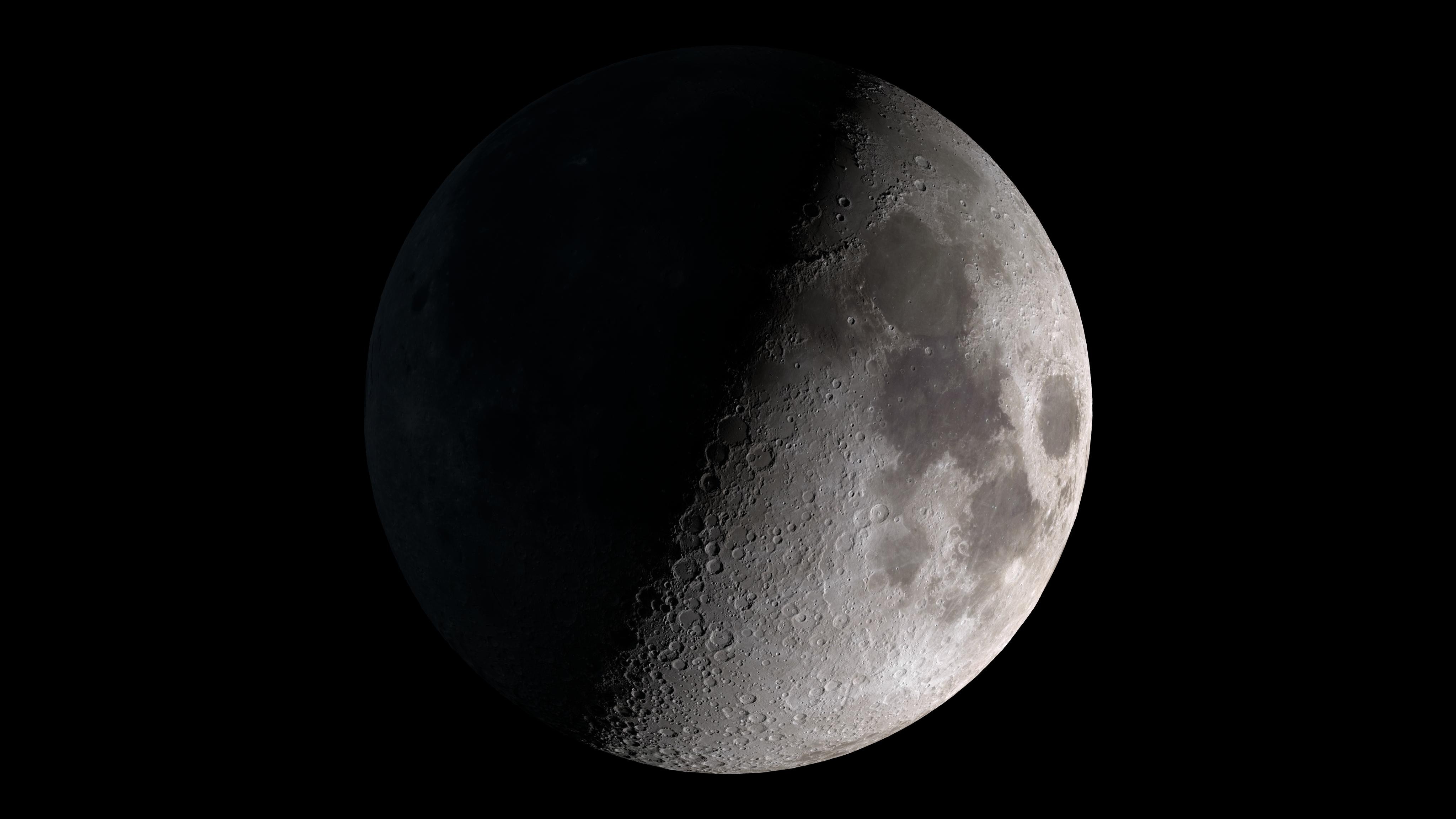
The moon's phases are one of the most familiar sights in the night sky. Every month, we see our lone satellite wax and wane through a series of shapes, taking it from an unmissable full moon down to a tiny sliver of a crescent, briefly disappearing from view entirely and then returning to full once more.
This page was updated on Dec. 22, 2023
What is the moon phase today?
Tonight, Dec. 22, 2023, the moon is at the Waxing Gibbous phase of its lunar cycle, and is 80% illuminated. The moon is 10 days old — meaning it is that many days into its roughly 30-day cycle.
December's full moon, which rises Dec. 26, is also called the Cold Moon.
The cycle at a glance:
-The last Full Moon, also called the Beaver Moon, rose on Nov. 27, 2023.
-On Dec. 5, the moon entered its Third Quarter phase where half the moon's Earth-facing side appears illuminated as the moon wanes toward a New Moon.
-On Dec. 12, a New Moon rose, with the moon's surface appearing completely dark. This is the start of the next lunar cycle.
-On Dec. 19, the moon entered its First Quarter phase where half of the moon's Earth-facing side appears illuminated as the moon waxes toward full illumination.
-On Dec. 26 the final Full Moon of the year rises, with the moon appearing bright and large in the sky. The December Full Moon is also called the Cold Moon.
Moon phase calendar
| Date | Phase of the moon | Time (ET) |
| Jan. 6 | Full Moon | 6:09 p.m. |
| Jan. 14 | Third Quarter | 9:13 p.m. |
| Jan. 21 | New Moon | 3:55 p.m. |
| Jan. 28 | First Quarter | 10:20 a.m. |
| Feb. 5 | Full Moon | 1:30 p.m. |
| Feb. 13 | Third Quarter | 11:03 a.m. |
| Feb. 20 | New Moon | 2:09 a.m. |
| Feb. 27 | First Quarter | 3:06 a.m. |
| Mar. 7 | Full Moon | 7:42 a.m. |
| Mar. 14 | Third Quarter | 10:10 p.m. |
| Mar. 21 | New Moon | 1:26 p.m |
| Mar. 28 | First Quarter | 10:33 p.m. |
| Apr. 6 | Full Moon | 12:37 a.m. |
| Apr. 13 | Third Quarter | 5:12 a.m. |
| Apr. 20 | New Moon | 12:15 a.m. |
| Apr. 27 | First Quarter | 5:19 p.m. |
| May 5 | Full Moon | 1:34 p.m. |
| May 12 | Third Quarter | 10:28 a.m. |
| May 19 | New Moon | 11:52 a.m. |
| May 27 | First Quarter | 11:22 a.m. |
| June 3 | Full Moon | 11:41 p.m. |
| June 10 | Third Quarter | 3:31 p.m. |
| June 18 | New Moon | 12:37 a.m. |
| June 26 | First Quarter | 3:39 a.m. |
| Jul. 3 | Full Moon | 7:38 a.m. |
| Jul. 9 | Third Quarter | 9:49 p.m. |
| Jul. 17 | New Moon | 2:33 p.m. |
| Jul. 25 | First Quarter | 6:08 p.m. |
| Aug. 1 | Full Moon | 2:33 p.m. |
| Aug. 8 | Third Quarter | 6:29 a.m. |
| Aug. 16 | New Moon | 5:38 a.m. |
| Aug. 24 | First Quarter | 5:58 a.m. |
| Aug. 30 | Full Moon (Blue Moon) | 9:37 p.m. |
| Sept. 6 | Third Quarter | 6:22 p.m. |
| Sept. 14 | New Moon | 9:40 p.m. |
| Sept. 22 | First Quarter | 3:32 p.m. |
| Sept. 29 | Full Moon | 5:58 a.m. |
| Oct. 6 | Third Quarter | 9:49 a.m. |
| Oct. 14 | New Moon | 1:55 p.m. |
| Oct. 21 | First Quarter | 11:30 p.m |
| Oct. 28 | Full Moon | 4:24 p.m. |
| Nov. 5 | Third Quarter | 3:28 a.m. |
| Nov. 13 | New Moon | 4:27 a.m. |
| Nov. 20 | First Quarter | 5:50 a.m. |
| Nov. 27 | Full Moon | 4:16 a.m. |
| Dec. 5 | Third Quarter | 12:49 a.m. |
| Dec. 12 | New Moon | 6:32 p.m. |
| Dec. 19 | First Quarter | 1:39 p.m. |
| Dec. 26 | Full Moon | 7:33 p.m. |
As the phases are the moon are caused by the moon's orbit around Earth, they are entirely predictable. In fact, it is possible to work out the dates we'd see these phases for the next 50 million years. Here's what it will look like tonight:
What are the moon's phases?
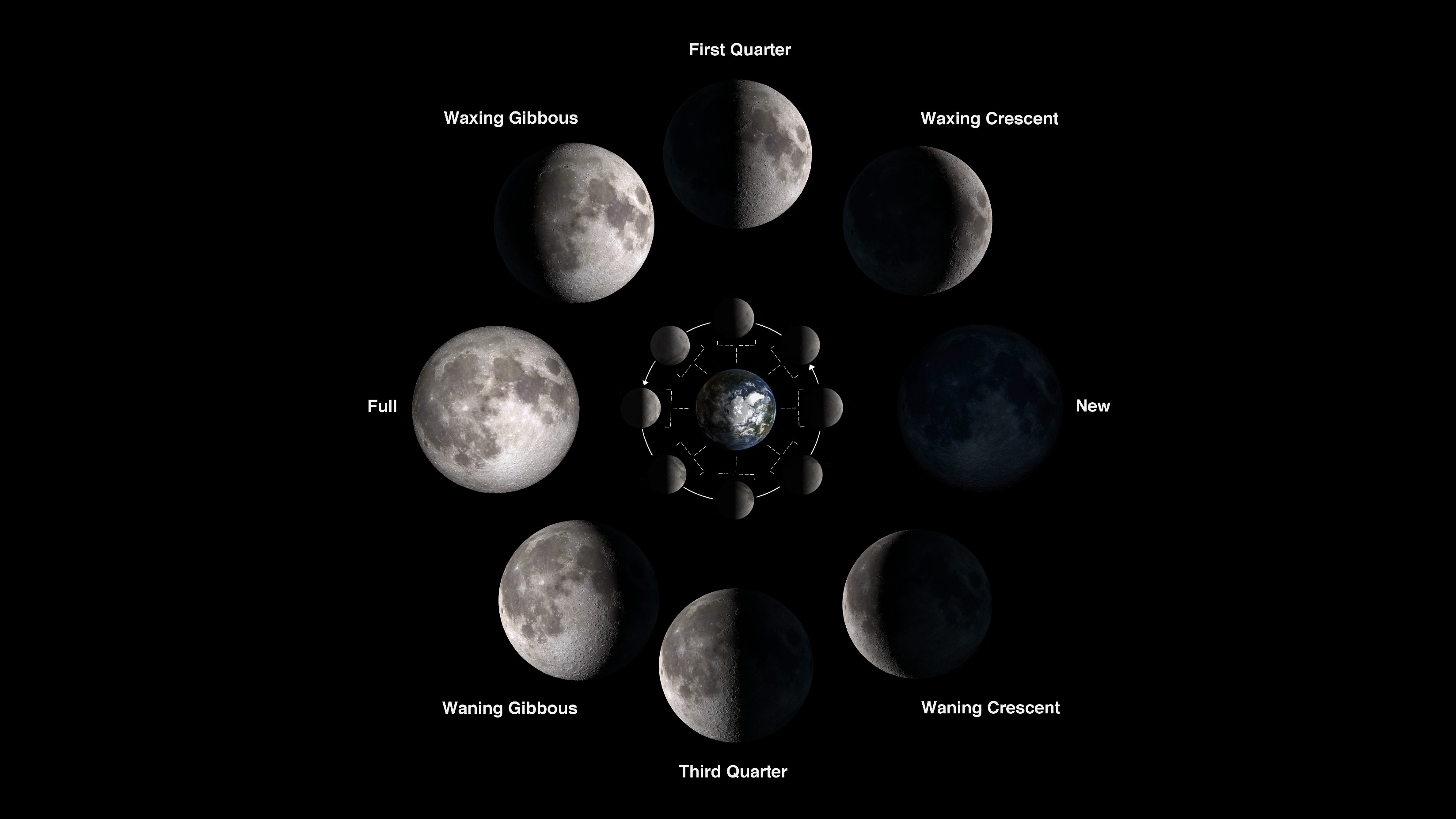
We say the moon is "new" when there's no light from the moon reaching Earth. Over time, we begin to see more of it and we say the moon is waxing.
First, we see a waxing crescent, then a so-called “first quarter moon.” It's a slightly confusing name because it actually appears as a half-illuminated moon in the night sky. But if you think about it, the moon can be split into four quarters: two on the side of the moon facing us and then two on the side that faces away from the Earth. During a first quarter moon, skywatchers see a quarter of the entire Moon illuminated.
Next comes a waxing gibbous moon — part way between a first quarter and a full moon. (It comes from an old Middle English word for "hump" because that's the shape it resembles in the night sky.) After the moon is full we say that the moon begins to wane. So a waning gibbous comes first, followed by a last quarter moon, a waning crescent and then a new moon once more.
It takes 29.5 days to go through this cycle of phases once, according to the Lunar and Planetary Institute.
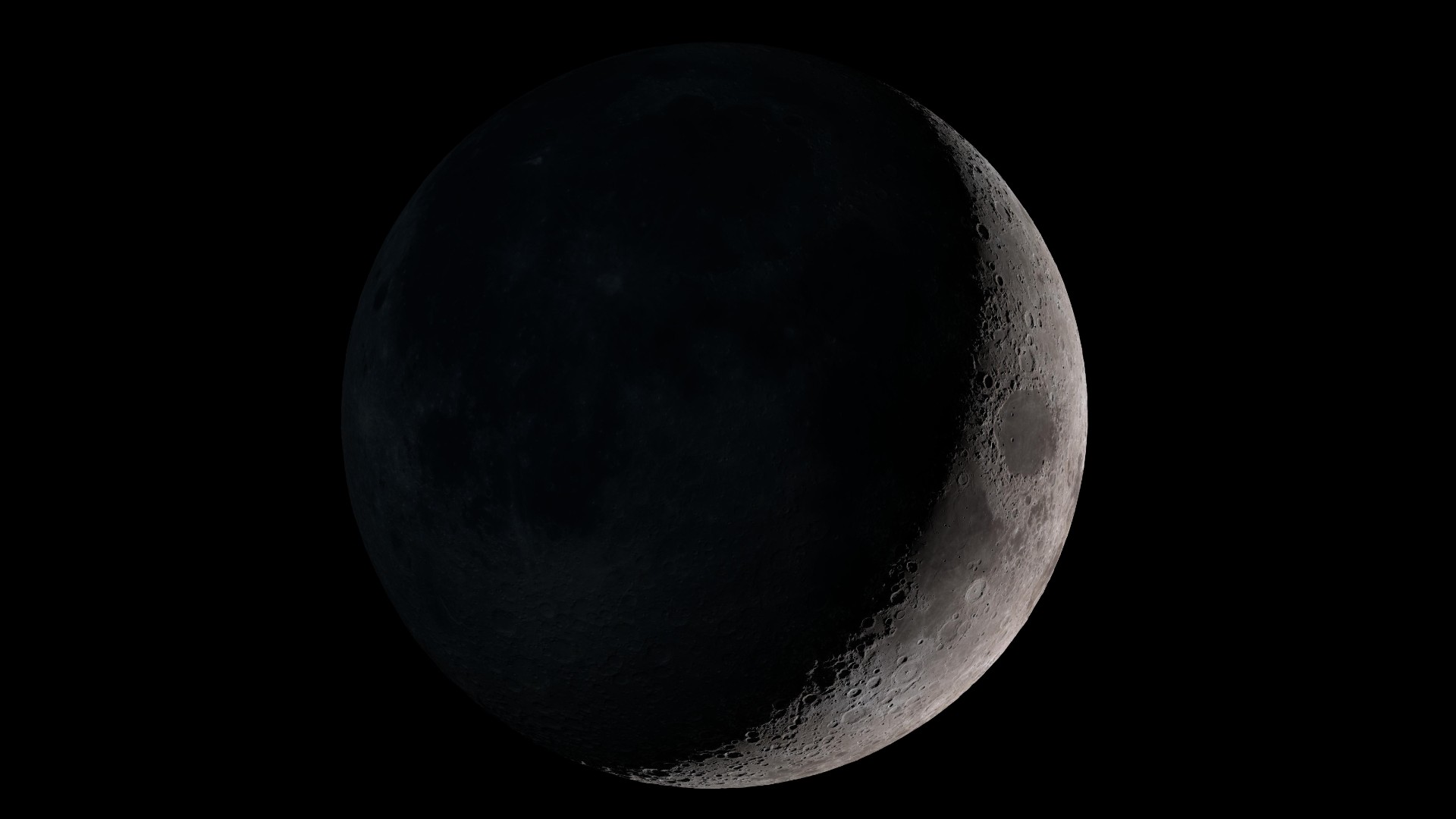
Why does the Moon have phases?
“The moon is only visible to us because it is reflecting the sun's light,” said Dhara Patel, a space expert at the United Kingdom's National Space Centre in Leicester. “Wherever the moon is in its orbit around the Earth, it is always half lit up by the sun.” Patel told Live Science. The same goes for the Earth – half of us experience daylight while the other half experience night.
The same half of the moon always faces the Earth, too. “The moon spins on its axis and orbits the Earth in the same amount of time – it's called synchronous rotation,” Patel said. Sometimes the illuminated half of the moon coincides with the half facing Earth. In that case, we see a Full Moon. This happens when the moon is on the opposite side of the Sun from Earth. Earth normally doesn't block the sunlight because the Moon's orbit is slightly tilted. When Earth does block the light, we see a lunar eclipse.
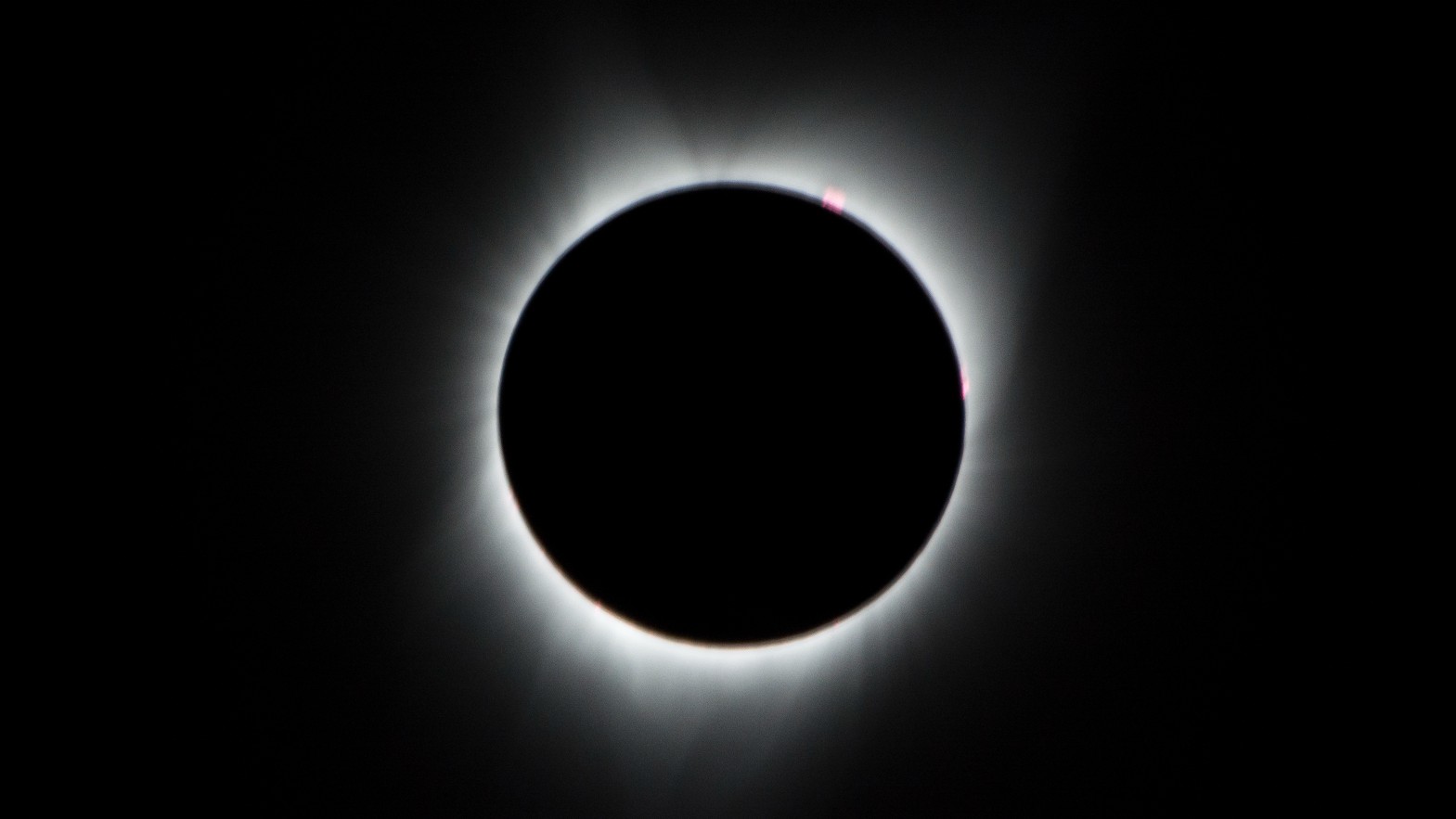
When the moon is between Earth and the sun, sunlight is completely illuminating the half facing away from us and so we see no light at all, or a New Moon. Again, the tilt of the moon's orbit usually prevents the moon from blocking our view of the sun. When it occasionally does we see a solar eclipse.
When sunlight is partially falling on our side and partially on the other we see the intermediate phases such as crescent, quarter and gibbous moons, according to Sky and Telescope.
What is the dark side of the Moon?
People often refer to the side of the moon that always points away from us as the “dark side of the Moon,” perhaps in part due to the Pink Floyd album of the same name. It may be a common phrase, but, according to Patel, it's not the right terminology to use. “The moon doesn't have a dark side, it has a far side,” Patel said. That far side is only very rarely completely dark – during a Full Moon when our side is completely illuminated. At all other times, the far side is at least partly illuminated, she said.
What is a lunar or moon calendar?
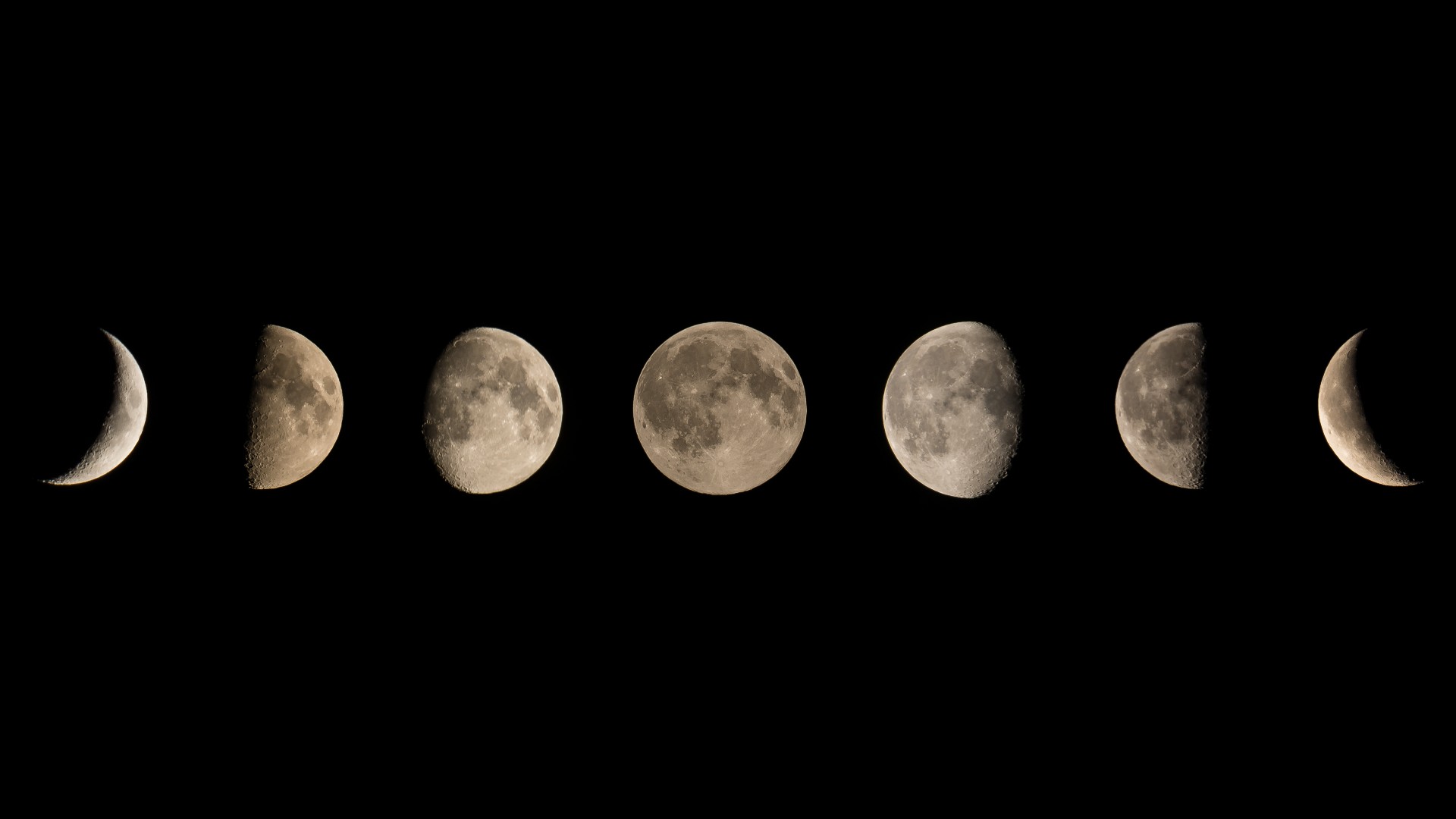
“Throughout human history, a lot of different civilizations and cultures have used the moon to dictate their calendars,” Patel said. In the Gregorian calendar, years are divided into into months, which comes from the word “moonths”. The average length of a calendar month is very close to the 29.5 days it takes for the moon's phases to cycle through.
The date of the Christian festival of Easter, for example, is calculated using the moon. Easter Sunday falls on the first Sunday after the full moon that occurs on or after the Spring equinox. If the full Moon falls on a Sunday, then Easter is the next Sunday.
The Jewish and Islamic calendars are also based on the moon.
And Chinese, Vietnamese, Hindu and Thai calendars are also still based on the moon. “In some cultures, the full moon each month is given a particular name to help keep track of time and the seasons,” Patel said.
Additional resources
- Learn more about the phases of the moon using this incredible interactive website from NASA.
- Hear about the moon's violent birth and how the phases of the moon have shaped our lives in this video from National Geographic.
- And for an extra-deep dive, find out everything you ever wanted to know about Earth's omnipresent satellite in the book "The Book of the Moon: A Guide to Our Closest Neighbor" (Abrams Image, 2019).
Originally published on Live Science
Sign up for the Live Science daily newsletter now
Get the world’s most fascinating discoveries delivered straight to your inbox.

Colin Stuart is an award-winning astronomy author, speaker and tutor based in the U.K. His popular science books have sold more than 400,000 copies worldwide and have been translated into 21 languages, and he has written more than 200 popular science articles for publications including The Guardian, the Wall Street Journal and the European Space Agency. The asteroid (15347) Colinstuart is named after him and he runs an online Astrophysics for Beginners course and a science writing course.










